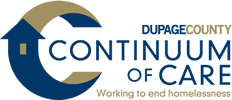An accurate count of Illinois’ population is essential to ensure that Illinois receives the funding it needs to adequately and effectively care for its residents and to provide critical services and programs. The Illinois General Assembly (ILGA) appropriated $29 million to the Illinois Department of Human Services (IDHS) to support a statewide census outreach and education effort to reach the highest self-response rate possible. Of this amount, up to $20 million will be awarded through this NOFO via a “hub and spoke” model whereby one or more intermediaries in 12 designated regions across the state will work with subrecipients, who are trusted messengers to reach Hard-to-Count (HTC) communities.
Selected Regional Intermediaries (RIs) will be responsible for selecting, supporting and managing subrecipients; providing technical assistance (TA) and capacity building; collaborating with the State and other entities to identify subsequent needs, and carrying out linguistically- and culturally-appropriate outreach and education efforts. A phased-in funding approach is envisioned to provide an additional $5 million in resources for subsequent needs and to further support proven projects. Finally, the comprehensive statewide census strategy will include communication and marketing efforts that support and amplify the work to increase knowledge, engagement, and participation in the 2020 Census.
The U.S. Constitution requires that a census, or count, of every person living in the United States take place every 10 years. The data collected by the decennial census determine the number of seats each state has in the U.S. House of Representatives and is also used to distribute billions in federal funds to states and local communities. In FY2016, Illinois received $34,331,000,530 through 55 federal spending programs guided by data derived from the 2010 Census, or approximately $2,669 per capita, in federal assistance. The funds support vital public needs, such as schools, roads, public transportation, hospitals and social programs. The failure to count every Illinois resident would have a significant negative impact on Illinois’ ability to meet the needs of its residents.
With much at stake, Governor Pritzker issued Executive Order 2019-10, establishing the State of Illinois’ Census Office (Census Office) at IDHS to support a robust statewide effort to educate and engage communities across the state, to increase collaboration between all levels of government and to build strong partnerships between private-sector and community leaders to ensure a complete and accurate count of Illinoisans.
To ensure that Illinois has the highest participation possible, the Census Office will be funding activities to increase the self-response rate of HTC communities and all Illinois residents, managing a statewide communications and marketing campaign and coordinating census efforts with other entities, including the U.S. Census Bureau, Illinois Complete Count Commission, the Office of the Secretary of State, local complete count committees, local governments (e.g., cities, counties, etc.), community organizations and the philanthropic sector.
Funding through this award will focus on increasing the self-response rate of HTC communities. Historically, the U.S. Census has undercounted certain population groups and certain geographic communities, which are composed of people in population groups and geographic areas that are least likely to return census questionnaires without in-person follow-up.
The Census Office also wanted to understand the geographic areas that were hardest to count. It worked with Northern Illinois University’s Center for Governmental Studies to create the Illinois Hard-To-Count Index (IL HTC Index) using 18 variables describing the characteristics commonly associated with low response areas, such as housing, income and age, including variables describing low internet access. This created a better understanding of potential response rates of certain geographic areas for the 2020 Census. The IL HTC Index guides how to allocate funds proportionally by targeting and prioritizing hardest to count areas. To see an index map highlighting Illinois’ hardest to count geographies, a full list of variables and how the index was calculated, go to http://illinoisdata.com/CensusHardToCount/.
The following list of HTC populations was developed by reviewing lists from the U.S. Census Bureau and the College University of New York (CUNY). RIs will be expected to create outreach strategies for these populations. Please note that there is not a singular definition of HTC populations, and the groups listed are not mutually exclusive, as one person may identify with multiple experiences.
- Racial and ethnic minorities
- Children younger than five years old
- Foreign-born individuals
- People with Limited English Proficiency
- Undocumented immigrant
- People living close to or below the poverty line
- Renters
- People who are young and mobile
- People experiencing homelessness
- People who live in rural areas
- People with disabilities (including Deaf and Hard of Hearing)
- Lesbian, Gay, Bisexual, Transgender and Questioning or Queer people
- Older adults
- People who distrust the government
Additionally, the 2020 Census will be the first decennial census to rely primarily on on-line responses, therefore persons living in homes with limited internet access are also at risk of not being counted.
These Illinois residents and families are at risk of being undercounted. Therefore, Illinois’ census communication and outreach strategy will focus on both geographic areas and demographic populations who are least likely to respond.
For more information, please visit https://www.dhs.state.il.us/page.aspx?item=117927.
